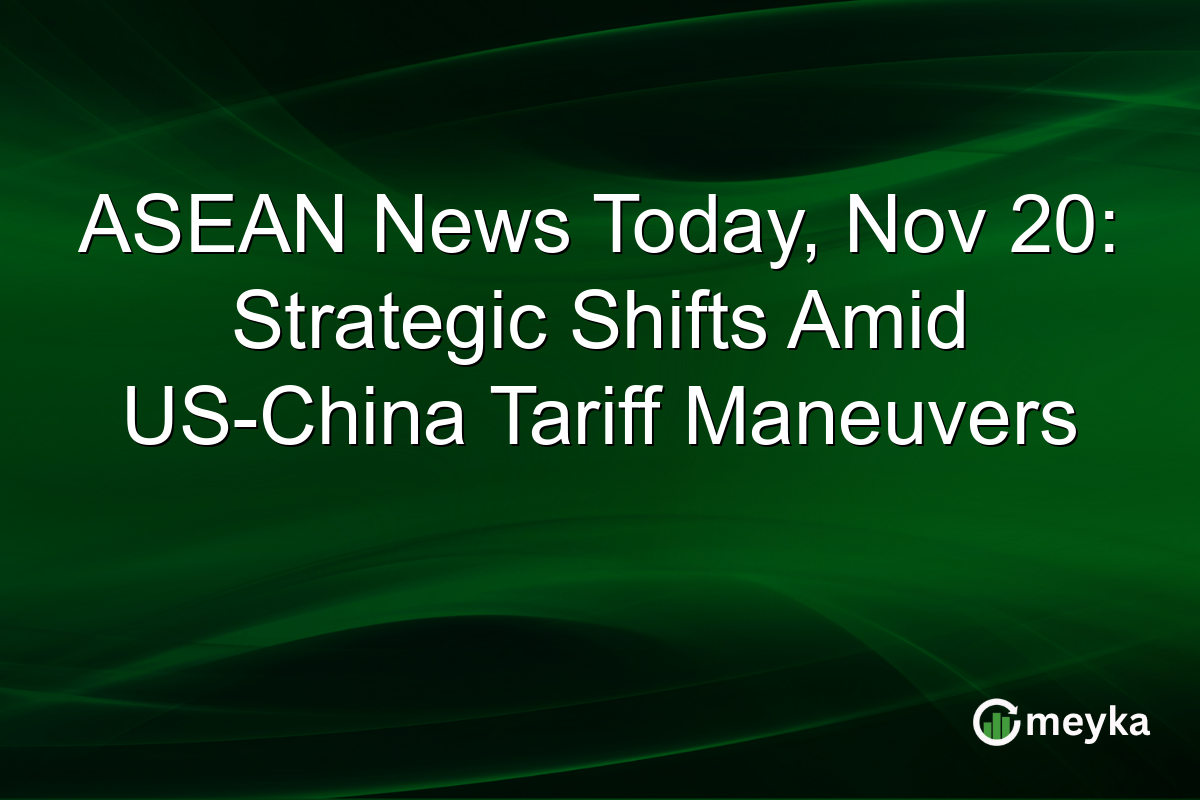ASEAN News Today, Nov 20: Strategic Shifts Amid US-China Tariff Maneuvers
ASEAN countries are emerging as a pivotal buffer in the ongoing US-China tariff conflicts. This development is reshaping trade dynamics in Southeast Asia, bringing opportunities and challenges. As ASEAN strengthens its position, it gains leverage in trade negotiations, affecting regional economic strategies.
Strategic Importance of ASEAN in the US-China Tariff Conflict
ASEAN is increasingly significant in global trade, especially amid rising US-China tensions. As tariffs flex upward, ASEAN nations have become crucial players. Their strategic location and robust markets offer an alternative trading path. This shift provides ASEAN with greater leverage in negotiations with both superpowers.
For instance, countries like Vietnam and Thailand have seen boosts in manufacturing, steering some business away from China. This shows the appeal of ASEAN as a viable trade partner and investment destination. Furthermore, their neutral position allows ASEAN economies to act as a bridge, facilitating smoother trade flows.
Such dynamics have led to a rise in regional cooperation agreements. These aim to strengthen intra-ASEAN trade, further solidifying their trade stature internationally. Their enhanced bargaining power is reshaping agreements, fostering a stable economic environment in Southeast Asia.
Impact on Regional Economic Policies
ASEAN’s role as a strategic buffer influences regional economic policies profoundly. Governments are now more focused on creating favorable trade environments to attract global investors. Policies promoting infrastructure development and investment-friendly regulations have become a priority.
For example, Singapore has increased its focus on digital trade frameworks, enhancing its hub status for global commerce. Meanwhile, Malaysia is bolstering its industrial sector to attract more partnerships.
This proactive stance is essential as ASEAN nations adapt to rapid changes. The evolving US-China relations catalyze these policy shifts, ensuring ASEAN remains a competitive force. The increased focus on technology and sustainability reflects broader global trends, appealing to diverse industries looking for growth opportunities outside China.
Trade Negotiation Leverage and Economic Growth
ASEAN’s newfound leverage in trade negotiations cannot be overstated. With the US and China seeking alternatives, ASEAN holds the cards to secure favorable terms. This empowerment is evident in recent negotiations involving digital economy partnerships and traditional trade agreements.
For instance, Indonesia’s involvement in technology trade negotiations with both Western and Asian partners showcases its growing influence. Such negotiations are poised to unlock significant economic growth, with financial forecasts estimating a 5% increase in the region’s GDP over the next three years.
These economic shifts benefit local businesses and promote a diversified trade environment. As ASEAN continues to position itself effectively, it not only buffers against tariff impacts but also fosters regional stability and prosperity.
Final Thoughts
ASEAN’s strategic positioning amid the US-China tariff maneuvers is transforming trade dynamics across Southeast Asia. By acting as a buffer, ASEAN gains negotiation leverage, influencing regional policies and attracting global investments. These shifts promise substantial economic growth and stability, allowing ASEAN nations to capitalize on new opportunities. For US investors, the region presents an evolving market landscape ripe for engagement. Staying informed about these changes can offer strategic advantages in navigating this global trade reconfiguration.
FAQs
ASEAN countries provide alternative markets and supply chains outside China, mitigating the impact of tariffs. Their strategic location and neutral stance allow them to facilitate smoother trade flows.
With greater leverage, ASEAN can secure favorable trade terms and attract more foreign investments. This empowerment strengthens its global standing and promotes regional economic growth.
Governments are implementing policies to enhance infrastructure, digital economy frameworks, and industrial capabilities, attracting international partnerships and strengthening their trade positions.
Disclaimer:
The content shared by Meyka AI PTY LTD is solely for research and informational purposes. Meyka is not a financial advisory service, and the information provided should not be considered investment or trading advice.






